 A (small) snapshot of marine debris collected from Chinese Harbor A (small) snapshot of marine debris collected from Chinese Harbor All words by Bren masters student Laura Ingulsurd, adapted from an Office of National Marine Sanctuary Weekly Situation Report. CINMS beach cleanup at Chinese Harbor on Santa Cruz Island collects 1,240 pounds of trash during “Get Into Your Sanctuary” weekend To kick off “Get Into Your Sanctuary” weekend, on Friday August 2, a mix of Channel Islands National Marine Sanctuary (CINMS) staff, interns, Sanctuary Advisory Council members, and local Santa Barbara lobster fishermen crossed the Santa Barbara Channel in the R/V Shearwater to clean trash off a Santa Cruz Island beach. Here's the breakdown from the day's activities:
Significance: The waters of Channel Islands National Marine Sanctuary are some of the state of California’s most productive fishing grounds. Sanctuary staff and local commercial fishermen are proud to collaborate and work together to clean up marine debris. Clockwise from top left: A lobster boat using its hydraulic pulley system to transport bagged trash off the beach (photo: Laura Ingulsrud); Summer interns repping “Get Into Your Sanctuary” shirts while removing trash from sanctuary shores (photo: Pike Spector); Part of the cleanup crew posing with their finds (photo: Sean Hastings).
0 Comments
California Sea Grant State Fellowship Monthly Progress Report Reporting Period: July 2019 Name: Pike Spector Agency: NOAA Channel Islands National Marine Sanctuary This month (July) marks my fourth full month with NOAA Channel Islands National Marine Sanctuary (CINMS) as part of the California Sea Grant State Fellowship. Most of this month was dedicated to an exciting Sanctuary Advisory Council meeting in Ventura county. However, I was also able to give two presentations to student groups and summer campers as part of my responsibilities to the outreach and education team. Sanctuary Advisory Council Meetings This month we held the third Sanctuary Advisory Council of the calendar year. In keeping pace with our schedule of alternating meetings across our constituency, we held this meeting at the Museum of Ventura County in Ventura, California. As part of my responsibility to support SAC meetings, I helped coordinate with the staff Ventura County Museum, and served as a liaison between their organization and CINMS. Further, with minimal support, the deputy superintendent and I were responsible for the set up and break down of the meeting space and associated technical equipment, although we did have help from two interns. During the meeting I was responsible for keeping audio and written recordings of the proceedings of the Council, and I ultimately compiled a written draft of the meeting’s key outcomes, which will be dispersed to the council. In preparation for the July meeting, I also attended the Conservation Working Group meeting (a subcommittee of the council) at the Environmental Defense Center. With help from an CSU COAST intern (Ms. Cassie Rogers), we invited CSU Channel Islands Professor Dr. Clare Steele to give a presentation on the state of marine debris in the Santa Barbara Channel. Although Dr. Steele studies a variety of anthropogenic impacts to the marine environment, she has gained notoriety for her work on microplastics. Dr. Steele gave an excellent overview on her research and the implications of continued microplastic exposure in the sanctuary and surrounding coastal ecosystems. We also heard from two National Marine Fisheries Service representatives: Ms. Laura McCue and Mr. Daniel Studt. Ms. McCue (the SAC NMFS member) is a marine mammal biologist with NMFS and gave an update on the recent gray whale unusual mortality event (UME). Reports of stranded and beached gray whales have been recorded at alarmingly high numbers since the beginning of summer; Ms. McCue updated the council on the most current information available and was able to draw parallels between this ongoing UME and the previous UME (1999-2000). Mr. Studt, a recreational fishing representative with NFS, outlined the NOAA Fisheries Priorities and Annual Guidance for 2019 and the 2019/20 engagement plan. This includes establishing a visible presence within the recreational fishing community both in person and on-line, and through the dissemination of outreach materials. Part of this strategy is to develop a mutual understanding of the priorities, challenges, and concerns for both recreational fishers and marine resource managers.  Clockwise from top left: A figure from Dr’s Steele’s microplastic presentation shows the extent of microplastics on California’s beaches; a slide from Mr. Studt’s recreational fishing engagement plan; a figure from Ms. McCue’s gray whale UME presentation comparing the 2019 UME with the 1999/2000 UME. Outreach and Education Two of the highlights of this month were guest presentations I was asked to give on behalf of CINMS. The first presentation was for the Scholastic Expeditions Summer Youth Program. Scholastic Expeditions provides week-long immersive summer camp experiences for students interested in learning more about natural history (among other programs). This particular program, “Galapagos of the North”, is centered around the biodiversity of the northern Channel Islands. I was asked to give a presentation on behalf of CINMS to the summer campers, all of which were from Santa Cruz, California. The second presentation I was invited to give was at the Seaside Village in Ventura, California, as part of the Seaside Village Kids Camp. The theme of this first session of the weekly kid’s camp was “baby shark”. Due to the attention CINMS has received over the recent basking shark sightings, I was delighted to talk to 60+ children (ages 3-9) about the sharks of the Santa Barbara Channel. Research
No new developments this month. Management Plan This month we began preparation for the release of the Notice of Intent for public scoping meetings leading up to the redrafting of the 10-year management plan. I participated on several exciting calls related to the roll out of the management plan itself and began helping to develop a communications plan. Unrelated to the management plan, CINMS is in the process of developing a new website. As such, I am helping design the management plan section. Social Media A vital component of my fellowship year is to actively update CINMS’s Facebook and Twitter accounts. These activities help engage the community and increase awareness around the sanctuary’s goal of protecting the Channel Island’s natural and cultural resources. However, this month the number of posts on both Facebook and Twitter began to decrease. We did participate in several exciting campaigns (e.g. Get into Your Sanctuary and Shark Week). Regardless, CINMS still maintains a presence on social media Housekeeping This month I was able to participate in a Hazardous Waste Operations and Emergency Response (HAZWOPER) certification training, which is great to have on one’s resume. I also participated in several exciting webinars and continued to act as a liaison for CINMS as a Sanctuary Programs Specialist. California Sea Grant State Fellowship Monthly Progress Report Reporting Period: June 2019 Name: Pike Spector Agency: NOAA Channel Islands National Marine Sanctuary This month (June) marks my third full month with NOAA Channel Islands National Marine Sanctuary (CINMS) as part of the California Sea Grant State Fellowship. This month, I was able to participate on several exciting field-based projects, webinars, general report writing, collaborative meeting attendance, and the usual office work/housekeeping, and public-interfacing. Sanctuary Advisory Council Meetings As there was no SAC meeting this month, my normal duties were delegated to planning the July meeting. However, our two US Coast Guard seats switched over this month, so I joined CINMS staff in welcoming new US Coast Guard member CDR Justin Noggle. I also finalized the key outcomes from the May meeting and submitted them to Deputy Superintendent Michael Murray. Finally, I helped coordinate a session on microplastics with Dr. Clare Steele, assistant professor at CSU Channel Islands, for the upcoming July SAC meeting. Outreach and Education The highlight of this month was my participation in the Mendocino Marine Protected Area Collaborative ROV training session. The MPA Collaborative Network is an umbrella organization that represents fourteen collaboratives and carriers out projects that answer local needs regarding MPAs. I have been actively engaging with the Santa Barbara MPAC as part of my fellowship, had through this work I have successfully helped the SBMPAC receive a small remotely operated vehicle (ROV) through the S.E.E Initiative. This grant program, supported by Sofar, makers of small ROVs and open-ocean drifters, provides recipients with two of Sofar’s Trident® ROVs for use in education, outreach, and monitoring. Because of my engagement with the SBMPAC, I was invited to participate with the Mendocino MPAC’s Trident® training workshop in Fort Bragg, California. We had a great turn out for this event; the executive director of the MPACN was in attendance, as well as partners from California State Parks, California State Lifeguards, the Noyo Center (a local non-profit) and California Reef Check, and Sofar’s marketing director. Although the workshop lasted for only one day, I was able to interface with all of these groups and agencies and helped develop outreach programs that can actively assist in their dissemination of MPA-related projects. Immediately after returning from Fort Bragg, previous Sea Grant fellow and current contractor with CINMS, Lizzie Duncan and I were asked to give a presentation on behalf of CINMS to the Blue Horizons summer film class. This summer long course gives college-aged students a chance to produce their own short film related to an environmental and/or social issue. CINMS has a long-standing relationship with this course, it was a privilege to present ideas on behalf of the sanctuary to this student group. Left to right: Zack Johnson (Sofar) briefs participants before the dives; two separate groups of participants get a chance to “fly” Tridents®; CINMS fellow Pike Spector helps “field test” a Trident® in situ along the Mendocino Coast. Photo credit: Nicole Palma (MPACN), Zack Johnson (Sofar), and Pike Spector (CINMS) Research After several long months of attempting to be cleared as a NOAA volunteer dive, I have at least been cleared to dive with UC Santa Barbara’s diving safety program on NOAA vessels (under the purview of UCSB diving operations). As such, I was able to participate on a day of roving diver fish counts inside and outside of restored eelgrass meadows on Anacapa Island. This project, part of a long-term ecological study, is jointly supported by UCSB and NOAA. We were able to use a NOAA vessel to support dive ops; in attendance was PI Jessie Altstatt, Julie Bursek (CINMS unit dive supervisor and outreach and education coordinator), and National Marine Fisheries Service habitat biologist Dave Witting. To say that we had ideal conditions would be an understatement; we conducted one dive in a severely impacted, former eelgrass meadow (now sand flat), and two dives in adjacent restored meadows. During the first dive Julie Bursek and I encountered an abandoned lobster pot full of live lobsters (including three gravid females) and managed to open the trap and free them. On our second dive we counted several small leopard sharks and a California halibut, and on our third dive we encountered not one, but two endangered and protected giant black sea bass. While I have a background in marine ecology, and have logged numerous dives in California, seeing an ecosystem sustained by the office I work in is essential to maintaining the perspective and motivation required to support this amazing Sanctuary. An amazing day of diving on Anacapa Island. Clockwise from top right: a mid-sized giant black sea bass makes a special appearance during fish counts; a small leopard shark hides in the sea grass; divers Julie Bursek, Jessie Altstatt, Dave Witting, and Pike Spector pose between dives. Management Plan
No new developments this month, although we have begun drafting our Notice of Intent, which we will eventually share with the public. Social Media A vital component of my fellowship year is to actively update CINMS’s Facebook and Twitter accounts. These activities help engage the community and increase awareness around the Sanctuary’s goal of protecting the Channel Island’s natural and cultural resources. This month I have increased the amount of posts on both Facebook and Twitter and have boosted CINMS’s social media presence. I’m still grappling with post content and timing; some posts receive disproportionate support/attention on social media. As such, I am trying to dial in a recipe for social media success. Housekeeping Working with a federal agency has taught me about the snail’s pace of government work. I have been working with Julie Bursek to coordinate a White Abalone Workshop for members of the local urchin fishery and ideally local dive clubs as well. After several long discussions, and near-endless back and forth’s with agency partners, I was able to coordinate a call with partners from California Department of Fish and Wildlife and the Southwest Fisheries Science Center. Things are still moving slowly, but this call was very productive. Aside from coordinating this call, and taking care of general office “housekeeping”, I was able to participate in several exciting webinars, two of which were facilitated in part by California Sea Grant and/or current CA Sea Grant fellows.  Fish counters between dives. From left to right: the author, Dave, Jessie, and Julie Fish counters between dives. From left to right: the author, Dave, Jessie, and Julie Anacapa Island Channel Islands National Marine Sanctuary 6/20/2019 May grey, June gloom. A light drizzle, low cloud base, calm and glassy seas. Typical conditions along the coast of California as the seasons transition from spring to summer. In the post-dawn gloom, I helped load gear with NOAA affiliate and principle investigator Jessie Alstatt, CINMS Unit Dive Supervisor and Team Lead for Education and Outreach Julie Bursek, and National Marine Fisheries Service biologist and habitat restoration specialist David Witting. Our goal was to survey restored eelgrass meadows (Zostera marina) and adjacent disturbed sandy bottom habitats for any and all fish, from the benthos through the water column. And we couldn’t have asked for better conditions. Most people envision SCUBA divers working on bright, sunny, tropical coral reefs with hardly any neoprene on at all. This is not the case for those who are interested in studying, understanding, and restoring the vital nearshore habitats of the northeastern Pacific. As we headed across the channel, from Santa Barbara to Anacapa Island, we studied the horizon for any signs of the charismatic marine life that inhabits the Santa Barbara Channel. We were rewarded by the blows of distant humpback whales, and the playful acrobatics of common dolphins. But as we studied the fish guides onboard the Sanctuary’s 28ft twin-hulled power cruiser dubbed Sharkcat we turned our attention to the objective at hand. We split our group into two dive teams; Jessie and Dave would take the first plunge, and Julie and I would be ready to drop in as soon as they surfaced. As far as dive objectives go, counting fish while swimming along a depth gradient for 30minutes (15minutes on one heading, 15minutes back on a reciprocal heading) isn’t too terribly challenging. On our first dive, Julie and I surveyed a once-pristine eelgrass meadow turned sandflat by years of abuse by boaters. We hardly saw any living vertebrates during that dive. Fortunately, our next two dives took place in eelgrass meadows meticulously restored and surveyed over the last several years by Jessie. At the start of dive two, Julie and I dropped down into a dense eelgrass meadow right on top of several juvenile leopard sharks (Triakis semifasciata), who utilize the eelgrass meadows as a nursery ground. However, dive three really made our day. About halfway through, I felt a looming presence emerge to my right; that feeling of being watched began to creep into my thoughts. As I hastily glanced up, a behemouth emerged into my line of sight: a giant black sea bass (Stereolepis gigas)! These voracious fish-eating bass were once common in Southern California, but their huge bulk and tendency to investigate humans has led to their listing as a critically endangered species. True to their inquisitive nature, this gentle giant, easily 200lbs+, swam laps around Julie and me for the remainder of the dive. The once abundant fishes would scatter as soon as the big black bass would come near and would quickly swim back to investigating our numbers as behemoth continued to make the rounds. After a marvelous dive, Julie and I began to surface, when suddenly a quick flash of silver caught my attention. I thought I was seeing double when another giant black sea bass came swimming my way! Only this time, it wasn’t the big fish but a juvenile who was just getting its adult coloration! Now, you all know me, I get far more excited by exploring autotrophic communities (i.e. ecosystems built upon photosynthesizers) than counting fish (take that charismatic megafauna!). But, the point of this post isn’t to highlight the frenzy of fish found on the Channel Islands, but to show that RESTORATION WORKS! Our fish count data show a clear dichotomy between sand and seagrass; the fish go where the habitat is. Yes, there is a high diversity of organisms (sometimes fishes included) on sandy bottoms, but sand flats just don’t compare to sheltered, three-dimensional, carbon dioxide sequestering, almighty eelgrass. If you still don’t get the appeal of eelgrass, grab a snorkel and see for yourself! -Baron von Urchin Side by side comparison of a sandy bottom that was once a seagrass meadow (left) and a healthy, vibrant seagrass meadow teaming with fishes
California Sea Grant State Fellowship Monthly Progress Report Reporting Period: May 2019 Name: Pike Spector Agency: NOAA Channel Islands National Marine Sanctuary This month (May) marks my second full month with NOAA Channel Islands National Marine Sanctuary (CINMS) as part of the California Sea Grant State Fellowship. Most of this month has been dedicated to the May 2019 Sanctuary Advisory Council meeting, as well as report writing, collaborative meetings, and general office work/housekeeping. Sanctuary Advisory Council Meetings This month we held the second Sanctuary Advisory Council meeting of the year. This SAC was the first one that I was held totally responsible for (former Sea Grant fellow Dr. Lindsay Marks had secured the venue for us in 2018). As part of my responsibility to support SAC meetings, I helped coordinate with the staff of the Santa Barbara Zoo (the venue for this meeting). Further, with minimal support, the deputy superintendent and I were responsible for the set up and break down of the meeting space and associated technical equipment. During the meeting I was responsible for keeping the audio and written recordings of the proceedings of the Council, and I ultimately compiled a written draft of the meeting’s key outcomes, which will be dispersed to the council. In preparation for the May meeting, I also attended the Conservation Working Group meeting (a subcommittee of the council). In preparation for this meeting I took on the responsibility of coordinating two guest presenters: Megan Hepner from the Southern California Coastal Ocean Observation System who drove up from San Diego, and Dr. Heidi Dewar of the Southwest Fisheries Science Center who presented remotely. A lot of behind the scenes work went into ensure the successful delivery of their presentations. The council was delighted by the guest presentations and ultimately, we had an incredibly productive SAC meeting. Outreach and Education Part of my duties as a fellow with CINMS will be to help facilitate the outreach and education programs facilitated by Sanctuary staff. This month the education and outreach responsibilities for my fellowship were tabled so that I could devote more time to the May SAC meeting. However, I was able to join the CINMS LiMPETS coordinator for a morning of intertidal sampling protocol review. By getting my hands wet (so to speak) I am better able to assist with the LiMPETS program. Further, I have offered to help with the analysis of student-collected data for a national report due in July 2019. In continuing with CINMS mandate of engaging with stakeholders the general community, I presented a lecture on nearshore habitats to a recreational fishing class hosted by the recreational fishing member of the SAC. Captain David Bacon approached the Sanctuary and ask the staff if anyone would be willing to give a lecture on the nearshore habitats of the CINMS to his first-ever shore-based recreational fishing class. I immediately answered the call and prepared a one-hour lecture to be delivered to the mostly adult cohort of students. The class was well attended, and I have been told that the lecture was well received. I reveled in this opportunity to present to the recreational fishing class not only a fellow, but also as someone interested in human-resource interactions. To follow up on the Sofar ROV collaboration from April, I have met with the Santa Barbara chapter of the Marine Protected Area Collaborative Network coordinators to assist them in getting their own ROV. Through several meetings and phone calls, I have taken a hands-on roll in contributing to their OpenExplorer webpage, which is critical to successful award of an ROV through the S.E.E. initiative. Research To follow up on last month’s seminal basking shark tagging effort, the collaborative, multi-line office Web Story was published in early May. It was a privilege to work with collaborators across NOAA line offices, such as the Southwest Fisheries Science Center, and I was honored that my name was attached on the “by line” for the publication. The marks the first major deliverable of my fellowship year to date. The recent sightings of basking sharks in the Sanctuary prompted a lot of coverage from the media; our web story was released just in time to generate a lot of attention for the Sanctuary. We are currently working on a video about basking sharks which will be released sometime this summer. Management Plan
No new developments this month. Social Media A vital component of my fellowship year will be to actively update CINMS’s Facebook and Twitter accounts. These activities help engage the community and increase awareness around the Sanctuary’s goal of protecting the Channel Island’s natural and cultural resources. This month I have increased the amount of posts on both Facebook and Twitter and have boosted CINMS’s social media presence. To date, the release of the basking shark web story generated the most media attention the CINMS Twitter page has ever received. Housekeeping Now that I have been working at the CINMS office for several months, I have been able to fully integrate into systems operations. During this month I have also participated in a number of in-house staff meetings and have attended NOAA webinars relevant to my fellowship and academic/social interests. Finally, in review of footage from the ROV dives during one of the April outreach and education cruises, I came across the first ever sighting of Undaria pinnatifida, the voraciously invasive alga, on Santa Cruz Island. Dr. Lindsay Marks confirmed the sighting, which was promptly shared across relevant agencies in and around the Channel Islands. I was asked to write a Situation Report on this discovery, which was shared with all Office of National Marine Sanctuary Staff through the online public of the Weekly Situation Reports. Since then, I have been asked to contribute to “SitReps” when applicable during my fellowship. As part of a California Sea Grant fellowship with NOAA Channel Islands National Marine Sanctuary, I'm expected to work a plethora of diverse and challenging projects. I'm incredibly proud to have worked on a really exciting collaboration with both CINMS and the National Marine Fishery Services's Southwest Fisheries Science Center (SWFSC) . Last month, I joined a crew from the sanctuary office to look for, and hopefully tag, rare and elusive basking sharks. These gentle giants are the second largest sharks, after whale sharks, and, like whale sharks, they're filter feeders! I know this has nothing to do with algae, but sharks need love too! Especially basking sharks, since we know so little about them. Check out this web story that I helped draft for more information! Spoiler alert: we tagged 2 sharks!!! Nearly doubling the tagging effort first started in 2010. Updated August 8th, 2019
Holy cow! We got an honorable mention from Medium in the Sci Short Form Institution category for the April - June quarter! Big shoutout to all of our collaborators on this project, you're all rock stars! Well, I could make a number of excuses as to why I haven't posted on here in three months (yikes!). But I won't. Somewhere between graduating from SDSU and moving to Santa Barbara to start a new job I managed to squeeze in a three-week trip trip to Peru. But now that the fun is over, I've managed to settle in nicely at NOAA Channel Islands National Marine Sanctuary. I have the honor and privilege of being a California Sea Grant State Fellow; for the next year I will be supporting the resource management and education/outreach programs at CINMS. And I couldn't be more thrilled about it! As part of my Sea Grant fellowship I am required to submit monthly progress reports, which I'm happy to share here as well! Below is a brief synopsis of my first month with CINMS. California Sea Grant State Fellowship Monthly Progress Report Reporting Period: April 2019 Name: Pike Spector Agency: NOAA Channel Islands National Marine Sanctuary This month (April) marks my first full month with NOAA Channel Islands National Marine Sanctuary (CINMS) as part of the California Sea Grant State Fellowship. Most of this month has been split between front-end logistics for the commencement of the fellowship year with CINMS, and my contributions to the ongoing efforts of CINMS. Sanctuary Advisory Council Meetings The end of my first week with CINMS (March 2019) marked the first bi-monthly Sanctuary Advisory Council (SAC) meeting of the 2019 calendar year. Due to the partial government shutdown, the council’s January meeting had to be canceled. Hence, the March meeting was even more exciting. As part of my responsibility to support SAC meetings, I helped organize refreshments for the meeting, as well as assisting with the set up and break down of the meeting space and associated technical equipment. Further, I assisted outgoing Sea Grant Fellow Lindsay Marks with audio and written recordings of the proceedings of the Council, and I ultimately compiled a written draft of the meeting’s key outcomes, which will be dispersed to the council. In preparation for the March meeting, I attended the Conservation Working Group meeting (a subcommittee of the council) and began interfacing with council members. In preparation for the next SAC meeting (May 2019), I have begun coordinating the reservation of the meeting space. Further, I synthesized the “Topics of Interest” worksheet assigned to council members, in order to better serve the needs of the council for the 2019 calendar year. Outreach and Education Part of my duties as a fellow with CINMS will be to help facilitate the outreach and education programs facilitated by Sanctuary staff. Throughout the last month I have attended several conference calls related to the Long-Term Monitoring Program and Experiential Training for Students (LiMPETS) program. Over the course of the fellowship I will help the program staff at CINMS review LiMPETS protocols in an effort to better manage this program. During this month I have participated on two education cruises aboard CINMS’s vessel r/v Shearwater. The first cruise was in collaboration with a field methods course from Santa Barbara City College; we hosted over a dozen college students and exposed them to several marine monitoring sampling techniques. To enhance the student’s learning, I used a connection to Bay Area based Sofar, makers of publicly accessible remotely operated vehicles (ROVs), who participated on the cruise with two of their ROVs. During the cruise, we set up stations and allowed the students to “fly” the ROVs in seagrass meadows. The students were delighted by the real-time video of the marine environment, which we broadcasted on monitors in the Shearwater’s dry lab and wheelhouse; I was responsible for managing the wheelhouse station while the Sofar team managed the dry lab station. The success of this cruise has opened the door for future collaborations with Sofar, which I hope to implement during my fellowship. The second cruise I participated on was with a group of middle school and high school science teachers. Like the first cruise, we used the Shearwater as a mobile laboratory around Santa Cruz Island. I was able to set up an ROV station on this cruise as well, and gave the teachers the opportunity to “fly” the ROV in a kelp forest. The teachers, like the students on the first cruise, were delighted by the ROV’s ability to immerse them in the subtidal environment from the comfort of the research vessel. Research
Though not strictly part of my fellowship plan, I was invited to participate on a collaborative project with CINMS and the Southwest Fisheries Science Center (SWFSC). In conjunction with researchers from SWFSC, I joined two other researchers from CINMS to locate, and ideally, tag basking sharks within the Sanctuary’s waters. Once seen in great numbers, basking sharks (the second largest fish in the ocean) are now incredibly rare in CINMS and are poorly understood by fisheries scientists and managers. I was honored to be part of the team that tagged two sharks; so far, only four sharks have been tagged in the north Pacific (in 2010 and 2011). To showcase this momentous effort, I have helped draft a “Web Story”, which will be posted on the Office of National Marine Sanctuary’s website, as well as on the SWFSC’s website, later this month. Management Plan A large part of my fellowship year will be spent working on the redrafting of CINMS’s 10-year management plan. As this process begins to ramp up, I have participated on several conference calls related to the redrafting of the management plan. Social Media A vital component of my fellowship year will be to actively update CINMS’s Facebook and Twitter accounts. These activities help engage the community and increase awareness around the Sanctuary’s goal of protecting the Channel Island’s natural and cultural resources. I typically post ~2-3 times per week. So far, I have received positive feedback on my posts. Logistics Working under the auspices of a federal agency has meant a lot of front-end logistics need to be taken care of before I can fully integrate into CINMS’s system. This month I have received my @noaa.gov email address, my building security card, and my common access and identification card. These tools have helped ease my transition into CINMS’s office and help legitimize my position as a fellow with CINMS. During this month I have also participated in a number of in-house staff meetings and have attended NOAA webinars relevant to my fellowship and academic/social interests.  Post-defense victory! Snack game is always strong in the Edwards Lab Post-defense victory! Snack game is always strong in the Edwards Lab San Diego, California A great wave of relief. A heavy burden lifted off of one’s shoulders. A weight taken off one’s chest. This is how I thought I would feel after defending my master’s thesis at San Diego State University. But, to be perfectly honesty, I felt… nothing. I felt no different than I had before. It was an honor to present my work to my committee, department, colleagues and family. Was I nervous going in to it? Of course. But, as a graduate student I have already given more talks than I can count, why should this one be any different? But, now that I’ve had some time to reflect, I must admit, I do feel a little overwhelmed. I’ve been at SDSU for three and half years. I cut my teeth as a scientist here. I learned how to teach, take data, analyze results and write papers. I learned how to peer view with objectivity, and to scrutinize… everything. I’ve learned when to share my thoughts and when to hold my tongue. I learned more about myself than I thought possible. But most importantly, I’ve learned that I know I don’t know enough. I’ll take that challenge head-on, in due time. However, what I do feel right now is inexplicable. For the last three and a half years I’ve worn many hats. But when asked about, “what I do”, I simply tell the enquirer that I’m a graduate student. Well, no more (at least for now). I’m elated to announce that I’ll be working as a California Sea Grant fellow with NOAA's Channel Islands National Marine Sanctuary starting in early 2019. This challenge will be like no other, and I’m excited to rise to it. But, I still can’t shake this subtle feeling of losing my identity. I’ve been so insulated in the world of academia. It’s time to shake off the dust and rejoin the rest of the world. It’s been a wild ride here at SDSU. I’ve traveled around the globe, sticking my face in too cold water in the name of exploration and research. I’ve gotten to collaborate with colleagues from endless institutions, countries and disciplines. It has been an honor to work with the next generation of scientists, and to contribute to the body of evidence that helps explain the natural world. It’s been a rollercoaster to say the least, but I wouldn’t trade it for the world.
I’m not signing off, not by any means. But I might be taking a step back for the next few months. But I challenge you to keep exploring, to keep asking questions and seeking answers. And most importantly, I challenge you to look at the world with eyes full of wonder. As a scientist, as an explorer, as a citizen of planet earth. Cheers for now! Sincerely, Baron von Urchin  Special thanks to Dany, the MexCalitos, and Patrick for another successful sampling trip! Special thanks to Dany, the MexCalitos, and Patrick for another successful sampling trip! Ensenada, Baja California ¡Bienvenidos! Summer is the field season for many biologists; I think I speak for a lot of us when I say it’s equally exhilarating and exhausting. Having three geographically disparate locations for my thesis has created unanticipated challenges, but I wouldn’t change it for the world. And to be perfectly honest, I have no shame in saying that Baja California is by far my favorite place to work. Never have I felt more welcomed into a community than by the MexCal dive and research team. Dr. Rodrigo Beas has facilitated a vital component of my thesis, and the army of undergraduates in MexCal have proven to be invaluable in the field. After several trips to Baja, Dr. Beas finally joined me in the field. We also had the privilege of diving with Dr. Julio Lorda, another of the MexCal PIs. In return, my assistante numero uno, Patrick, and I were invited to participate in a series of MexCal “lightning talks”. With next to no warning, Patrick and I had to put together five-minute presentations detailing our projects and future plans. There’s nothing like working under a tight deadline! We were thoroughly impressed we the caliber of the undergraduates’ projects, and their level of autonomy. From modeling climate change scenarios to understanding multi-trophic aquaculture dynamics, it’s inspiring to watch these rising scientist-stars.
Sadly, my days of diving in Baja for my Master’s degree are numbered. But, I have a sneaking suspicion that my research in Baja is only just beginning. ¡Eso es todo por ahora! -Baron von Urchin  One of the disturbances in the mooring field is the blocked sunlight from the boats themselves One of the disturbances in the mooring field is the blocked sunlight from the boats themselves July 18th 2018 Wrigley Institute for Environmental Studies We’re just now wrapping up our first of four expeditions to Catalina Island’s rhodolith beds, and boy do we have a lot of data to process! In total, we’ve sampled five beds for fish, invertebrates, benthic cover (including cores) and set up 30 CBITs! We’ve talked about what we’re doing out here, and how it’s done, but the story won’t be complete until the data are analyzed. As ecologists, we try to balance field work with “office” work. While we’re often daunted by the enormity of trying to sample an entire ecosystem, the magic really happens when we analyze our data. But more on that later! Clearly, we’ve spent a lot of time underwater on this trip, maximizing our sampling effort and taking advantage of the incredible conditions. At first glance, the rhodolith beds look pretty plain and simple. But as we’ve shown, they’re a lot more dynamic than they appear. If you spend enough time in the ocean you’ll see some amazing organisms, and the rhodolith beds are no exception. From competitive macroalgae to charismatic vertebrates, check out some of the best biota the beds have to offer! |
AuthorPike Spector is currently a Research Operations Specialist with Channel Islands National Marine Sanctuary Archives
August 2022
Categories |

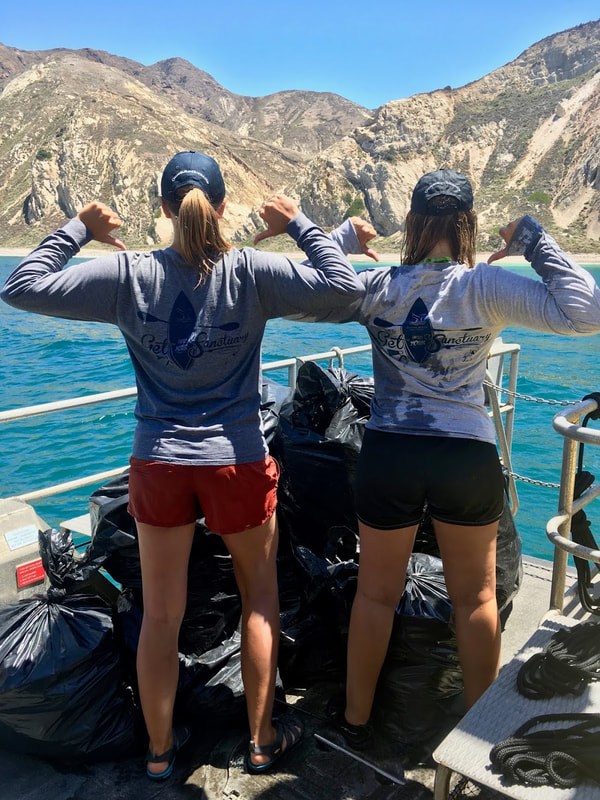
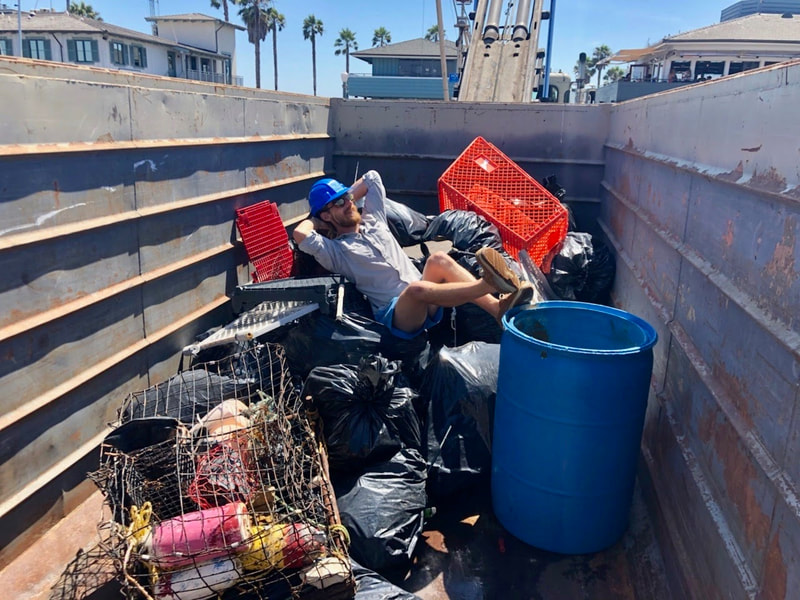






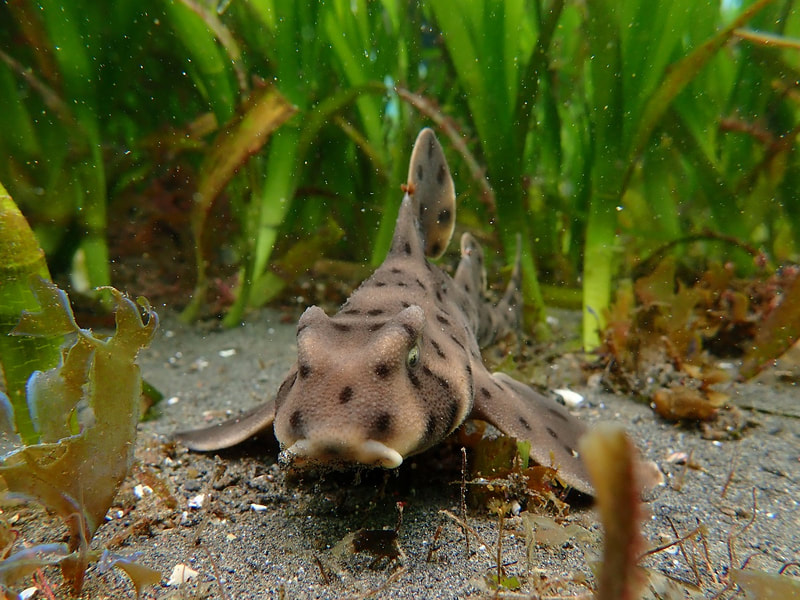









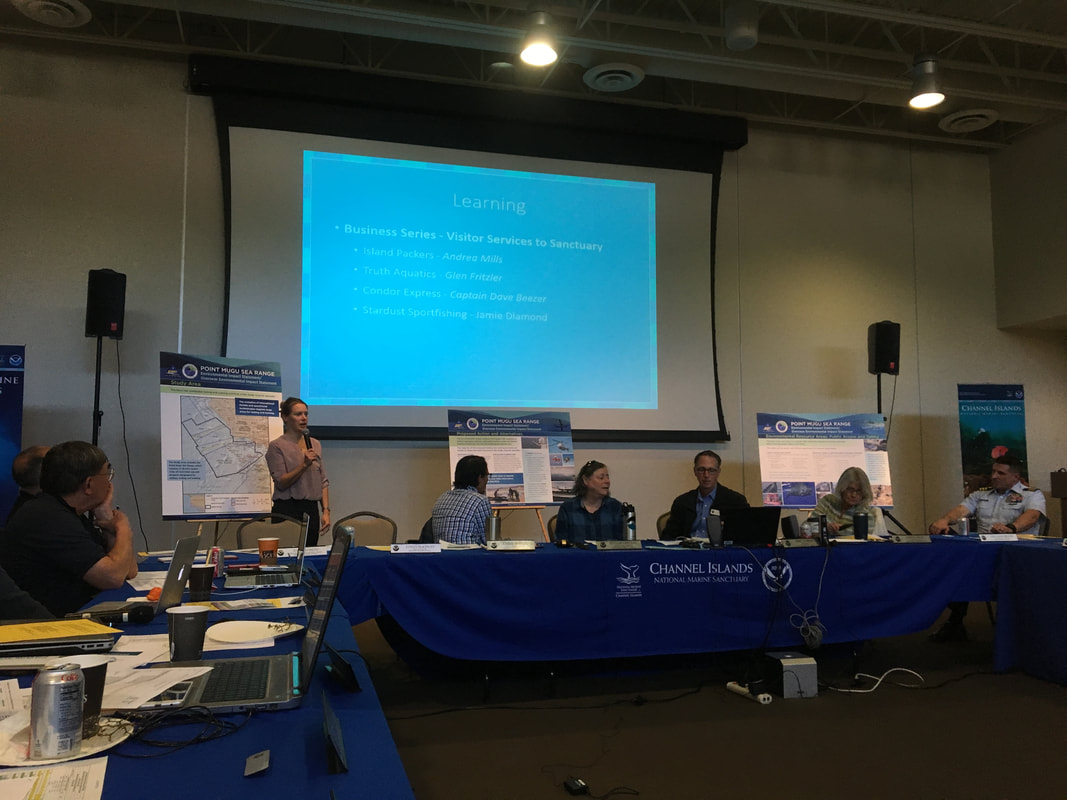









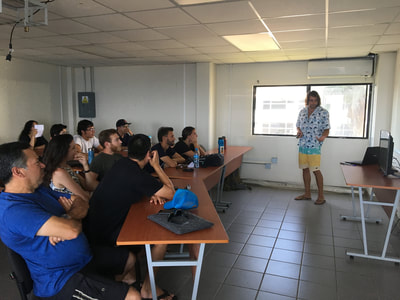
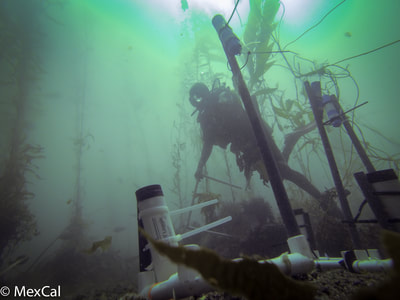


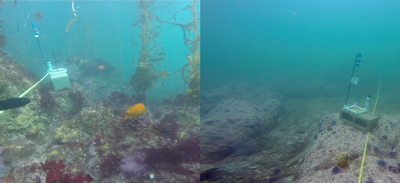









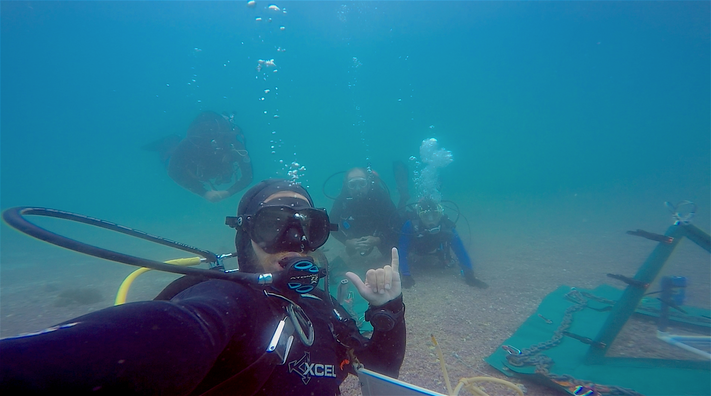
 RSS Feed
RSS Feed
